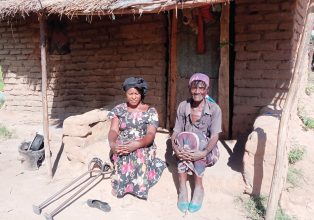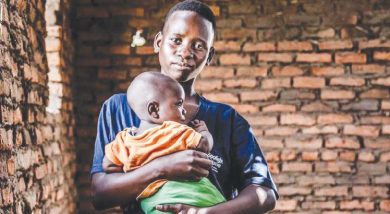Seated on a hospital bed in the paediatric ward at Queen Elizabeth Central Hospital (QECH), Lindiwe Mushonga of Ndirande Township in Blantyre looks anxious. Her hand rests on her son’s forehead, as if to check his temperature.
It is their third day in the ward after the son was diagnosed with malaria, and the fourth time he has been admitted to the hospital due to malaria.
“He is improving, but I am not sure when he will be discharged. My major worry is that the rains have come and I need to finalise preparing my field to plant with the first rains. If I don’t, then I will have a difficult year because my source of income is farming,” Mushonga laments.
Also bothering her, she says, is why her son continues to be attacked by malaria when they all sleep in treated mosquito nets every night.

Mushonga is not alone. The ward is full of children suffering from malaria, with some beds accommodating two children instead of one. Another guardian, Angaanatha Joseph, says it is her second time in the ward with her daughter this year.
“The first time was in January and we came here three days ago. She is improving and I am optimistic that we will be returning home soon,” says Joseph, adding that she is equally perplexed because her daughter sleeps under a treated mosquito net every night.
A Health Management Information System (HMIS) report says malaria episodes in Malawi revolve around five million per year. National data from all health facilities in Malawi, which is compiled by HMIS, shows that at least 2.1 million new cases of malaria were reported in outpatient departments (OPD) nationwide in the fiscal year 2012-2013, with 58 percent of them being under-five children.
This means on average, at least 214 persons per 1 000 people had malaria in the fiscal year.
In the 2011-2016 National Malaria Strategic Plan, government envisions a malaria-free Malawi. There is just a month before the deadline, but success remains far from reach.
The 2014 Malaria Indicator Survey released in February this year shows that between 2010 and last year, efforts against malaria have only achieved reducing the prevalence rate by 10 percent from 43 in 2010 to 33 in 2014. It puts the malaria prevalence rate at around four million, one of the highest in the world.
At a recent science café in Blantyre, experts at Malaria Alert Centre of the Malawi-Liverpool Wellcome Trust (MLW) feel there is long way to go for Malawi to eradicate malaria, but there is a room for improvement.
Worldwide, governments have intensified measures to fight malaria. In Malawi, there are currently three government interventions being implemented-prevention, control and treatment. However, more effort is being put on prevention and control.
Over the years, government has intensified the distribution and use of insecticide-treated nets (ITNs) or long lasting insecticide-treated nets (LLINs) to prevent users from being bitten by mosquitoes.
Statistics show that government has distributed over 10 million nets in five years and the household ownership of at least one ITN increased from less than 13 percent in 2000 to 55 percent in 2012.
Lead epidemiologist at MLW Trust, Dr Anya Terlouw, says three out of five households have a mosquito net. She said 10 million treated mosquito nets are being shipped into Malawi soon and there is hope that these will support the dream to have a net for every two people.
But senior entomologist at Malaria Alert Centre, Themba Mzilahowa, says ITNs are not the only solution to the fight against malaria.
Mzilahowa, therefore, argues that relying on ITNs alone is giving victory to malaria.
The recently adopted United Nations Sustainable Development Goals (SDGs), which will replace the Millennium Development Goals (MDGs) that are expiring in December this year, advocate a zero tolerance to any health infection, with SDG three calling on governments to “ensure healthy lives and promote well-being for all”.
Mzilahowa calls for destruction of “the malaria kingdom”.
But is this possible when government suspended the Indoor Residual Spraying (IRS) initiative?
“It is true that government suspended IRS, which to me is vital in the fight against malaria.
“The reasons, I understand, is that the chemicals used are expensive. IRS can trigger malaria transmission to very low levels. If people are falling sick to malaria when they have ITNs, then it means there is more to be done. Some mosquito bites happen outside homes,” he explains.
With IRS, different chemicals that kill mosquitoes are sprayed around the environment and in households.
“Malaria transmission remains high because of three key factors—lack of resources, biological and behavioural factors. Under biological, mosquitoes develop resistance to drugs and under behavioural, use of ITNs depends on one’s behaviour and will, while on resources, costs of ITNs, drugs and chemicals is a setback,” says Mzilahowa.
The Centre for Disease Control (CDC) rates malaria among the top 10 causes of deaths in Malawi. It is third after HIV and Aids and lower respiratory infections.
CDC says malaria causes eight percent deaths.





